Research Highlights 2009
Increased Cell Bond Tension Governs Cell Sorting at the Drosophila Anteroposterior Compartment Boundary
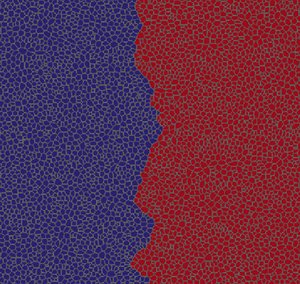
Compartments are distinct populations of cells in developing tissues. During development of the fly wing, anterior and posterior cell populations do not mix and are separated by a sharp and straight compartment boundary. Here we show that mechanical cell bond tension is increased along this boundary. This increase in bond tension is enough to guide cell rearrangements after division to maintain a stable interface between compartments.
K. P. Landsberg, R. Farhadifar, J. Ranft, D. Umetsu, T. J. Widmann, T. Bittig, A. Said, F. Jülicher and C. Dahmann
Curr. Biol. 19, 1950 (2009)
[PDF (4,3 MB)]; Supplementary Material
Quantification of Growth Asymmetries in Developing Epithelia
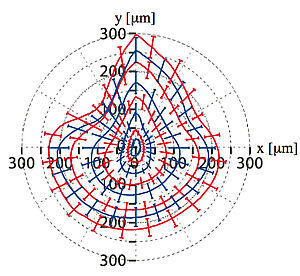
We quantify the area and the shape of the developing fly wing as a function of time and show that the growth rate decays exponentially. We show that growth is anisotropic and that the shape changes during growth. This growth anisotropy is modulated by the gradient of the morphogen Dpp which is involved in patterning and growth control. The anisotropic growth can be described as the behavior of an active fluid in two dimensions with a source that is subject to and an anisotropic active stress due to cell division.
T. Bittig, O. Wartlick, M. González-Gaitán and F. Jülicher
Eur. Phys. J. E 30, 93 (2009)
[PDF (424 kB)]
Steering Chiral Swimmers along Noisy Helical Paths
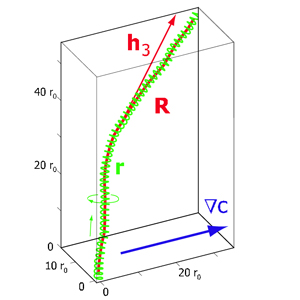
Many microorganisms are propelled by beating cilia and swim on helical trajectories because of the chiral asymmetry of the cilium and swimmer. Swimming is subject to fluctuations both in the environment as well as in signaling systems which steer the motion. We develop the stochastic differential geometry of chiral swimming and show that a generic mechanism permits reliable steering of swimmers in the presence of fluctuations and weak chemical cues.
B. M. Friedrich and F. Jülicher
Phys. Rev. Lett., 103, 068102 (2009)
[PDF (240 kB)]
Germline P Granules Are Liquid Doplets that Localize by Controlled Dissolution/Condensations
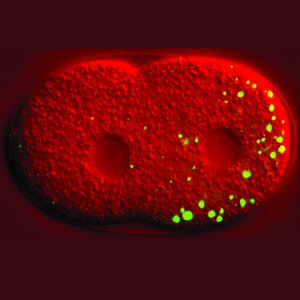
P granules are small aggregates of proteins and RNA which specifically localize to germ-line cells during development. Here we show that these cellular structures are liquid drops that self-assemble in the cell by condensing from the multi-component cytoplasm. Localization in one half of the fertilized egg cell is achieved by establishing a gradient of supersaturation. Thus, the cytoplasm self-organizes in distinct domains using liquid-liquid phase separation.
C. P. Brangwynne, C. R. Eckmann, D. S. Courson, A. Rybarska, C. Hoege, J. Gharakhani, F. Jülicher and A. A. Hyman
Science 324,1729 (2009)
[PDF (1,8 MB)]
Self-Organization of Dynein Motors Generates Meiotic Nuclear Oscillations
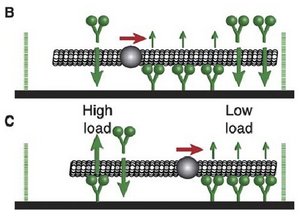
The collective behavior of motor proteins on dynamic microtubules generates oscillations of the cell nucleus and a dynamic redistribution of motors in the cell. This phenomenon is studied by a combination of experiments and theory. It is of key importance for the recombinationof DNA during meiosis.
S. Vogel, N. Pavin, N. Maghelli, F. Jülicher and I. Tolic-Norrelykke
PLoS Biology 7 (4) e1000087 (2009)
[PDF (828 kB)]; Supplementary Material; Press Release
Generic Theory of Colloidal Transport
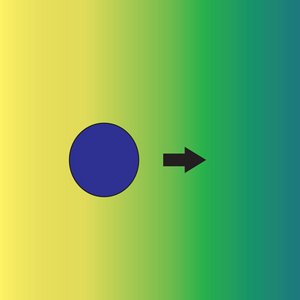
In the presence of concentration gradients, a colloidal particle is set in motion in a fluid. This motion also results in hydrodynamic flow perturbations. Motion induced by concentration gradients can be used to propel active particles. A generic description of these phenomena clarifies the underlying physical principles and the nature of the force balances which respect momentum conservation.
F. Jülicher and J. Prost
Eur. Phys. J. E 29, 27 (2009)
[PDF (444 kB)]
Delayed Coupling Theory of Vertebrate Segmentation
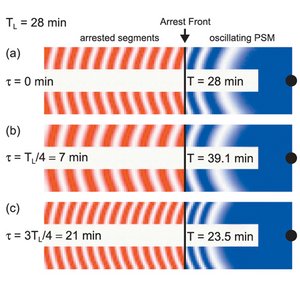
The segmented structure of all vertebrate organisms is generated by a dynamic process. In this process genetic cellular oscillations organize in collective spatiotemporal patterns that resemble traveling waves. These waves then freeze in a static periodic segmentation pattern. This pattern formation can be described by phase oscillators with a spatial frequency gradient that are coupled with time delays.
L. Morelli, S. Ares, L. Herrgen, C. Schröter, F. Jülicher and A. Oates
HFSP J.3, 55 (2009)
[PDF (816 kB)]; Supplementary Material